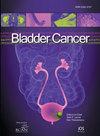机器人与开放式膀胱切除术的比较:系统综述
IF 1
4区 医学
Q4 ONCOLOGY
引用次数: 0
摘要
背景:与开放入路相比,机器人辅助根治性膀胱切除术(RARC)的益处仍在争论中。RARC的初始数据来自于通过体外入路进行尿分流的试验,这并不代表完全微创手术。现在有关于RARC伴体内尿转移的最新数据,增加了RARC的证据概况。目的:对RARC与开放式根治性膀胱切除术(ORC)的有效性进行系统评价和荟萃分析。材料与方法:检索截至2022年5月的多个数据库。我们纳入了患者接受RARC和ORC的随机试验。评估肿瘤和安全性结果。结果:共纳入7项试验,共907名受试者。两组的主要结局无差异:疾病进展[RR 0.98, 95% CI 0.78 ~ 1.23]、主要并发症[RR 0.95, 95% CI 0.72 ~ 1.24]和生活质量[SMD 0.05, 95% CI -0.13 ~ 0.38]。RARC导致围手术期输血风险降低[RR 0.57, 95% CI 0.43 ~ 0.76],伤口并发症[RR 0.34, 95% CI 0.21 ~ 0.55],住院时间缩短[MD -0.62天,95% CI -1.11 ~ -0.13]。然而,RARC组发生输尿管狭窄的风险增加[RR 4.21, 95% CI 1.07至16.53],手术时间延长[MD 70.4分钟,95% CI 34.1至106.7]。尿改道的方法对结果没有影响。结论:与ORC相比,RARC是一种肿瘤学上安全的手术,并具有微创手术的优点。接受RARC的患者发生输尿管狭窄的风险增加,值得进一步调查。两种治疗方法的肿瘤预后无差异。本文章由计算机程序翻译,如有差异,请以英文原文为准。
Comparison of Robotic vs Open Cystectomy: A Systematic Review
BACKGROUND: The benefits of a robot-assisted radical cystectomy (RARC) compared to an open approach is still under debate. Initial data on RARC were from trials where urinary diversion was performed by an extracorporeal approach, which does not represent a completely minimally invasive procedure. There are now updated data for RARC with intracorporeal urinary diversion that add to the evidence profile of RARC. OBJECTIVE: To perform a systematic review and meta-analysis of the effectiveness of RARC compared with open radical cystectomy (ORC). MATERIALS AND METHODS: Multiple databases were searched up to May 2022. We included randomised trials in which patients underwent RARC and ORC. Oncological and safety outcomes were assessed. RESULTS: Seven trials of 907 participants were included. There were no differences seen in primary outcomes: disease progression [RR 0.98, 95% CI 0.78 to 1.23], major complications [RR 0.95, 95% CI 0.72 to 1.24] and quality of life [SMD 0.05, 95% CI -0.13 to 0.38]. RARC resulted in a decreased risk of perioperative blood transfusion [RR 0.57, 95% CI 0.43 to 0.76], wound complications [RR 0.34, 95% CI 0.21 to 0.55] and reduced length of hospital stay [MD -0.62 days, 95% CI -1.11 to -0.13]. However, there was an increased risk of developing a ureteric stricture [RR 4.21, 95% CI 1.07 to 16.53] in the RARC group and a prolonged operative time [MD 70.4 minutes, 95% CI 34.1 to 106.7]. The approach for urinary diversion did not impact outcomes. CONCLUSION: RARC is an oncologically safe procedure compared to ORC and provides the benefits of a minimally invasive approach. There was an increased risk of developing a ureteric stricture in patients undergoing RARC that warrants further investigation. There was no difference in oncological outcomes between approaches.
求助全文
通过发布文献求助,成功后即可免费获取论文全文。
去求助
来源期刊

Bladder Cancer
Medicine-Urology
CiteScore
1.60
自引率
0.00%
发文量
35
期刊介绍:
Bladder Cancer is an international multidisciplinary journal to facilitate progress in understanding the epidemiology/etiology, genetics, molecular correlates, pathogenesis, pharmacology, ethics, patient advocacy and survivorship, diagnosis and treatment of tumors of the bladder and upper urinary tract. The journal publishes research reports, reviews, short communications, and letters-to-the-editor. The journal is dedicated to providing an open forum for original research in basic science, translational research and clinical medicine that expedites our fundamental understanding and improves treatment of tumors of the bladder and upper urinary tract.
 求助内容:
求助内容: 应助结果提醒方式:
应助结果提醒方式:


